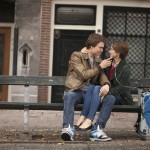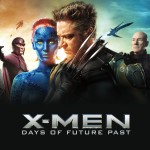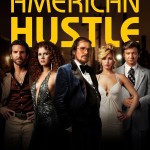Sometimes—maybe even most of the time—truly great works of art seem flawed at first. They are creations forged in a particularly intense imaginative fire, liable to leave them charred around the edges, or even a bit warped. Hamlet is the prime example: the greatest play of all time is nothing like you would expect, containing a play-within-a-play, strange existential soliloquies, and a plot that is driven more by the verbal and intellectual energy of its characters’ speeches than by the mechanics of its action. If someone were to sit down in a calm and reflective mood, and try to decide what kind of form the Crown of Dramatic Art should ideally take, he would never have arrived at the bizarre form of Hamlet. Yet, it remains at the sacred center, and defines what we consider genius and the sublime to be (or what people who still believe in genius and the sublime consider it to be).
I don’t mean to suggest that Cormac McCarthy’s The Counselor is comparable to Hamlet—if anything, it bears a more striking similarity to Jacobean revenge tragedies like The White Devil and The Duchess of Melfi: plays that probe the Abyss, presenting a ghastly pageant of Hollow Men and Hollow Women. Yet, The Counselor has been taking a lot of heat for its strangeness—its philosophical dialogue, its oddly shaped plotting—when, in fact, those apparent flaws are really part of what make it bracing and original. It’s received quite a few negative reviews—mainly for being too talky, and some would say pretentious. But pretense lies in pretending to be deep, not in actually being deep—though it’s easy for critics to forget that. And The Counselor is, I think, genuinely deep. Admittedly, it works better if you approach it as a play, or if you read the screenplay as a work of art in itself, full of juicy lines they left out of the final cut. If you go into it expecting the same sort of kinetic movie-going experience you find in No Country for Old Men, you’re bound to be perplexed and probably disappointed. It’s more of a bloody-minded My Dinner with Andre, less a plot-propelled thriller.
That’s my initial, defensive, cautionary note. What remains is the wholly interesting and quite simple question: “What does it mean?” What does The Counselor mean? Well, to start with, anyone interested in that question should look at the scene, fairly early on in the film, where Michael Fassbender’s Counselor meets with a Jewish diamond-dealer, played by Bruno Ganz, in Amsterdam. There are two chief parts to this sequence—one they kept in the movie, and another they cut; the latter is still present in the screenplay, which was recently published as a stand-alone book (it’ll probably show up on DVD bonus material at some point, too.) Both provide intellectual keys to interpreting the rest of the film, and help set it alongside McCarthy’s other books.
Ganz serves up some of the strange, rather abstract dialogue that the reviewers complain about. He tells the Counselor that every diamond is defined by the kind of flaw it has—in fact, a perfect diamond wouldn’t be a diamond at all; it would just be pure light. He then says, enigmatically, that the diamond he is showing the Counselor is a “cautionary diamond.” This makes sense, since the Counselor’s purchase of this particularly expensive flaw-in-the-light foretells his descent into a world of death, and, at the end, we see Cameron Diaz’s villainess absconding with a fortune, stored entirely in the form of diamonds (though the fact that she’s storing the fortune in diamonds is only mentioned in the screenplay).
The other important part, ultimately left out of the screen version, was a long speech the diamond dealer makes about how his native Spain will never recover from its current depression—which, he says, is the fate any country will and should suffer after it has kicked out the Jews. He offers up a mini-lecture about how the Semitic Hero was the main model for human beings in Western Civilization—the Prophet, the Man of God. Today, he claims, only the trappings of that image still exist—but the suit has a bad fit, and the hands “are dripping with blood.”
Both of these speeches might sound a bit ponderous, but they capture your attention, they read very well, and they aren’t aimless: they’re guiding the thread of the plot right into its proper warp and woof. In his other works, McCarthy frequently uses—and probably sort of believes in—an idea taken from Christian and Jewish mystics like Jakob Boehme and Isaac of Luria, which you can also find in sources as diverse as Franz Kafka’s parables and The Matrix. The idea is that (quoting Kafka), we’re “living in a false belief.” The world we inhabit isn’t the real world: it’s a demented copy, a photonegative of a better reality. The image of a diamond as a flawed version of pure light suggests this idea, or something akin to it. In another line cut from the movie, Brad Pitt’s character, Westray, actually quotes lines from Goethe that make the same point: “All that is perishable is but a likeness.” After Westray adds, “That’s basically Plato on wheels,” we can understand why the filmmakers thought this might’ve been a little too philosophical to leave in the final cut—but it nevertheless helps define the world in which The Counselor is taking place: a world that is, very literally, a con.
Ganz’s speech about the Semitic Hero fits right in with another of McCarthy’s big preoccupations—Decline and Decadence. McCarthy is a conservative, as made evident in a few interviews from the past; an article from Rolling Stone notes that his pick-up truck stands out among the Priuses assembled in the parking lot of the Santa Fe Institute, where McCarthy is a fellow. Even the name of Pitt’s character—“Westray”—is meant to suggest a ray of light from the setting sun (since Westray is the most morally conscious character in the film and screenplay, while also being pretty corrupt, not to mention worn out). The total effect of these ideas and images is to indicate that the plot of The Counselor occurs on a planet adrift, spinning out into the void alone.
I’m not suggesting that The Counselor screenplay is among the best of McCarthy’s books—most readers would probably choose from among Blood Meridian, The Road, and All the Pretty Horses. (I would also recommend McCarthy’s underrated play, The Sunset Limited, though it’s not on the same scale as those other three.) But The Counselor’s still got something to say, especially to a time and a place where great numbers of people are anxious about the apparent artificiality of life, beset by the sense that beneath the outwardly pleasant and affluent mode of life common to the Western World there lies a realm of unchecked evil and nihilism, a cosmic void more real than the benign aspects of reality; in The Counselor, McCarthy uses the drug cartels to represent the claims of this more basic world of wrath and negation. The movie—and the screenplay—might have flaws, but those flaws aren’t bad flaws: they’re part of the charm of genius, its tendency to give glimpses of the truth through a lens strangely formed—or, in the words of St. Paul, “through a glass, darkly.”













